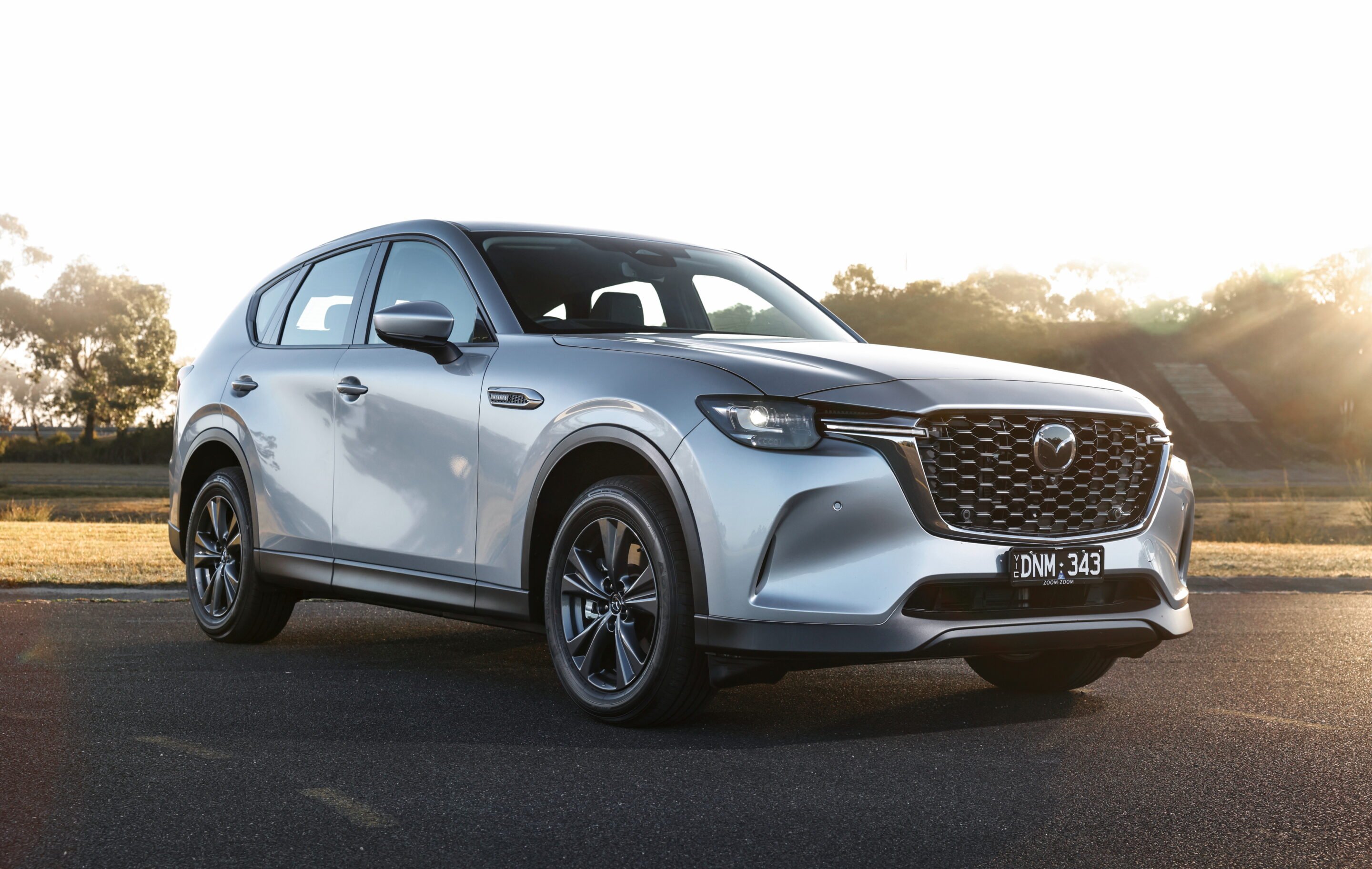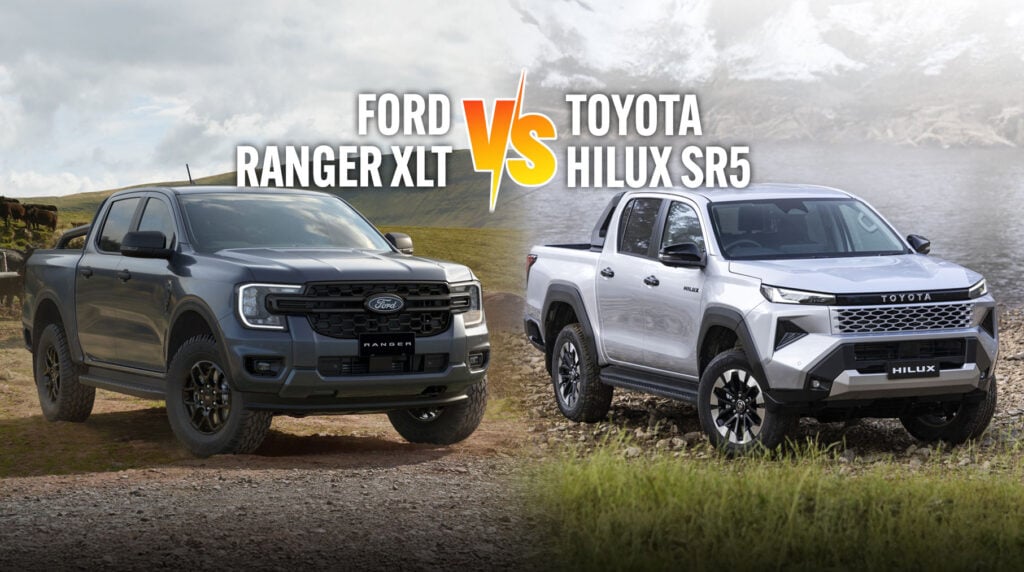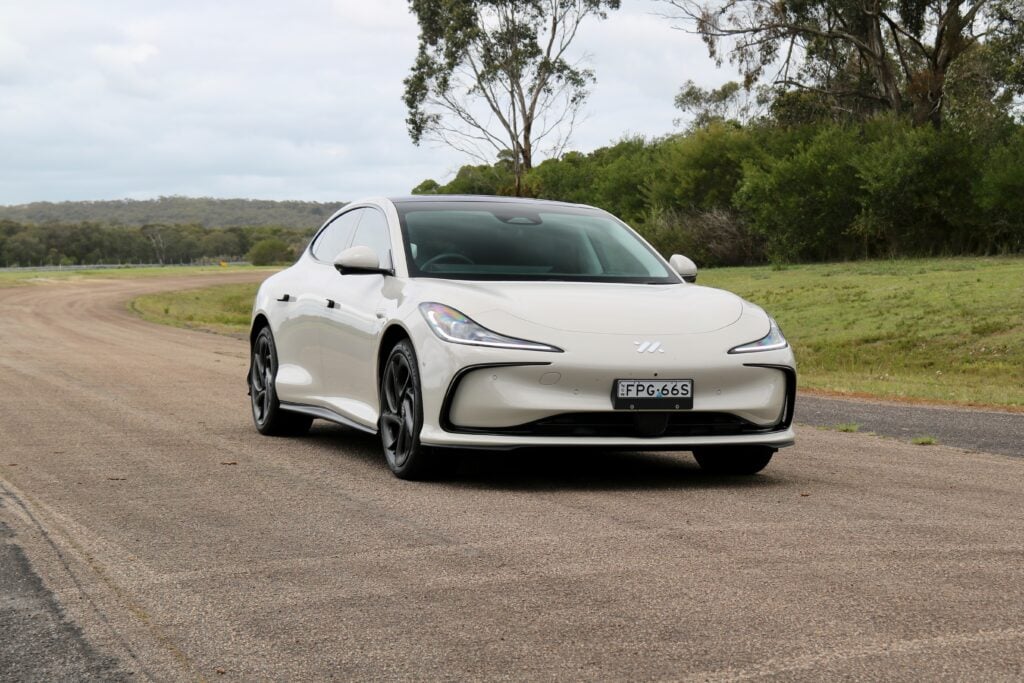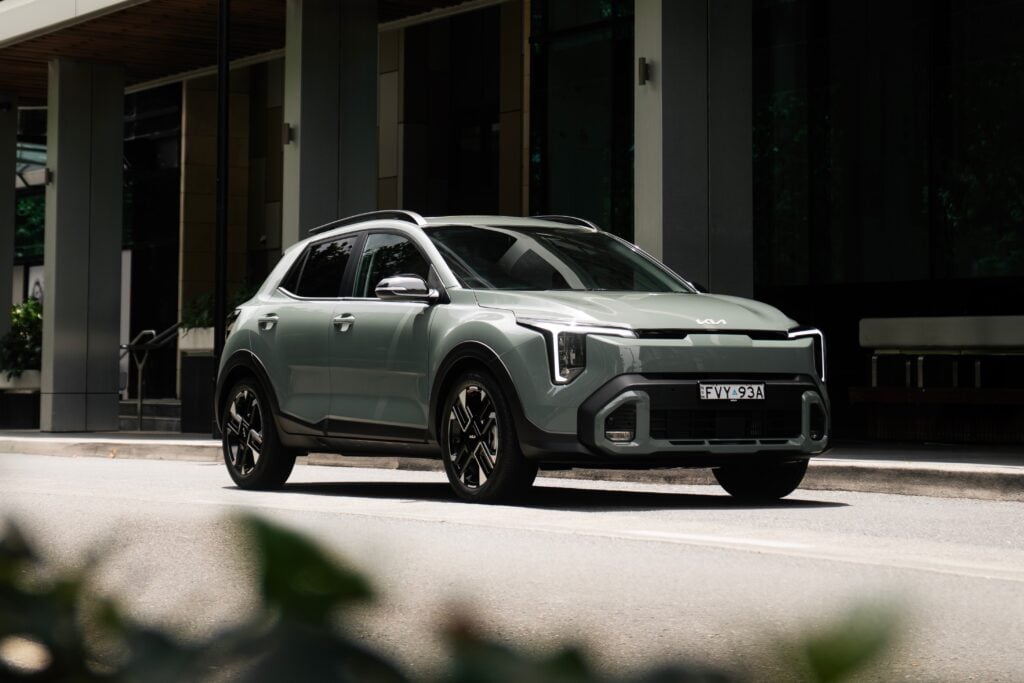Mentsu wo tamotsu is the Japanese term for it. We’d call it ‘saving face’ and it’s key to understanding the changes behind the new Mazda CX-60. It’s always fascinating when cultures abrade against other and when those two cultures are that of the upfront Aussie and the Japanese keen to save honour, it’s downright intriguing.
The backstory first. When we first drove the Mazda CX-60 way back in 2022, it impressed with a number of attributes but its ride wasn’t one of them. It felt niggly and nervous, and at odds with the company’s upmarket aspirations for the vehicle. A subsequent long termer in the Wheels garage only confirmed our suspicions that this was a vehicle that could have used some local suspension tuning. Other issues raised their heads too. Driveline shunt, gearbox calibration and a number of other engineering glitches blotted the CX-60’s copybook. It had such potential, but was annoyingly flawed in too many areas.
None of these seemed major impediments in the greater scheme of things. They were all easily eminently solvable, but it’s been a process. Don’t forget that Mazda has already had one slightly half-hearted stab at it, by fitting different rear shock absorbers to CX-60s built after October 2023 – and then making these parts available to existing owners as a retrofitted item.
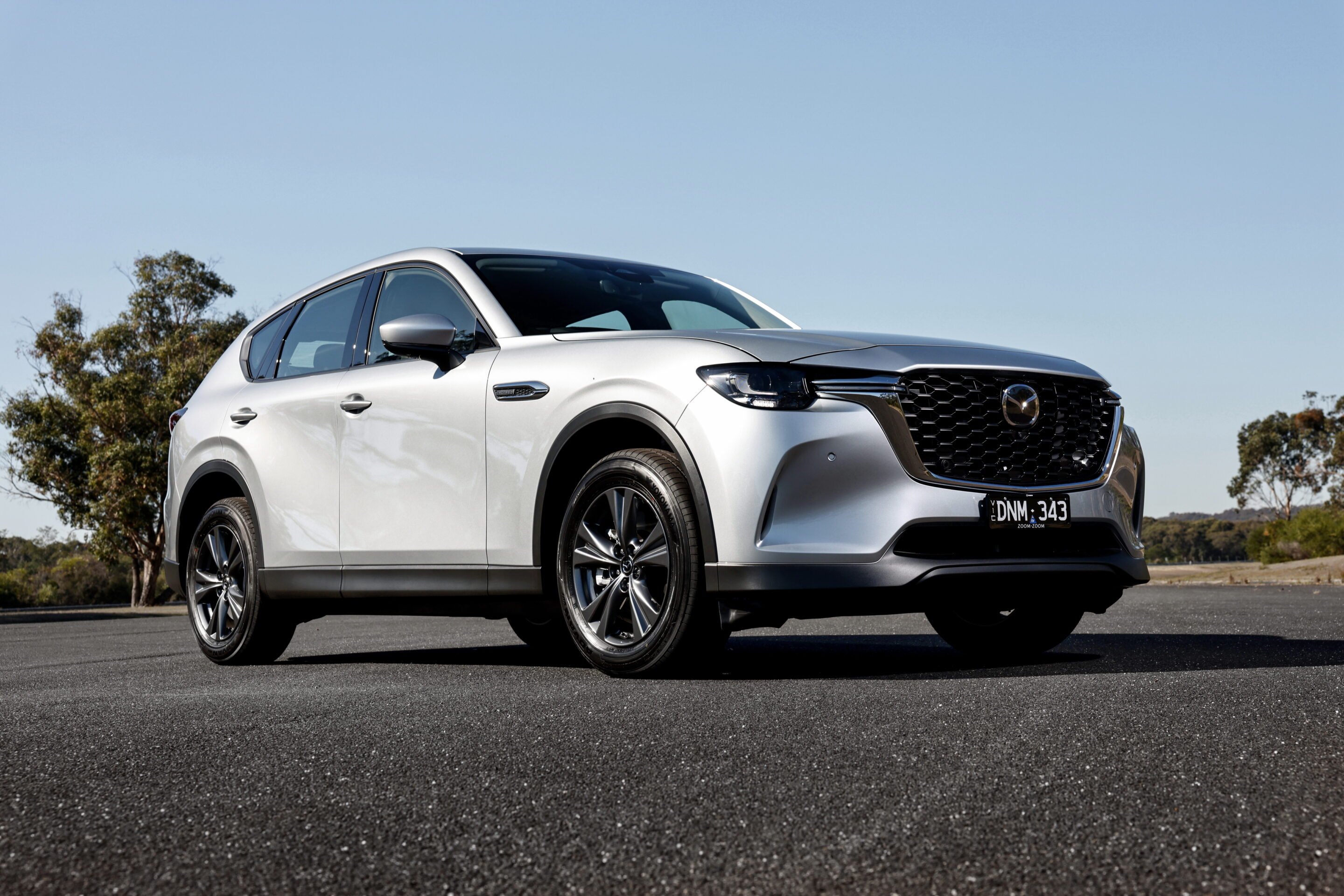
Mazda Australia were, as you might expect, pretty frank about the situation. While they pointed to the encouraging sales figures, they claimed that feedback from both customers and the reviews of journalists allowed them to push the Japanese mothership to effect remedial changes. In short, they acknowledged the shortcomings of the CX-60.
But speaking to Toshiaki Aoki, the chief engineer behind the product, a different story emerges. To Aoki, this was just the normal facelift and update process at work. While I’m not about to claim that he was being economical with the truth, there was clearly a different cultural viewpoint.
“Right after the launch of the original CX-60, and that’s when we started the development of this updated version. Actually, normally, when a new vehicle is introduced, then right after that, the next program starts,” he stated, suggesting that this was business as usual for Mazda.
It’s not. No car has this sort of major surgery wrought on its suspension if there wasn’t much wrong with it in the first place. To whit, Mazda have done away completely with the CX-60’s rear anti roll bar, and have effected remedial surgery on the springs, dampers and bushings in order to fix the ride quality issues.
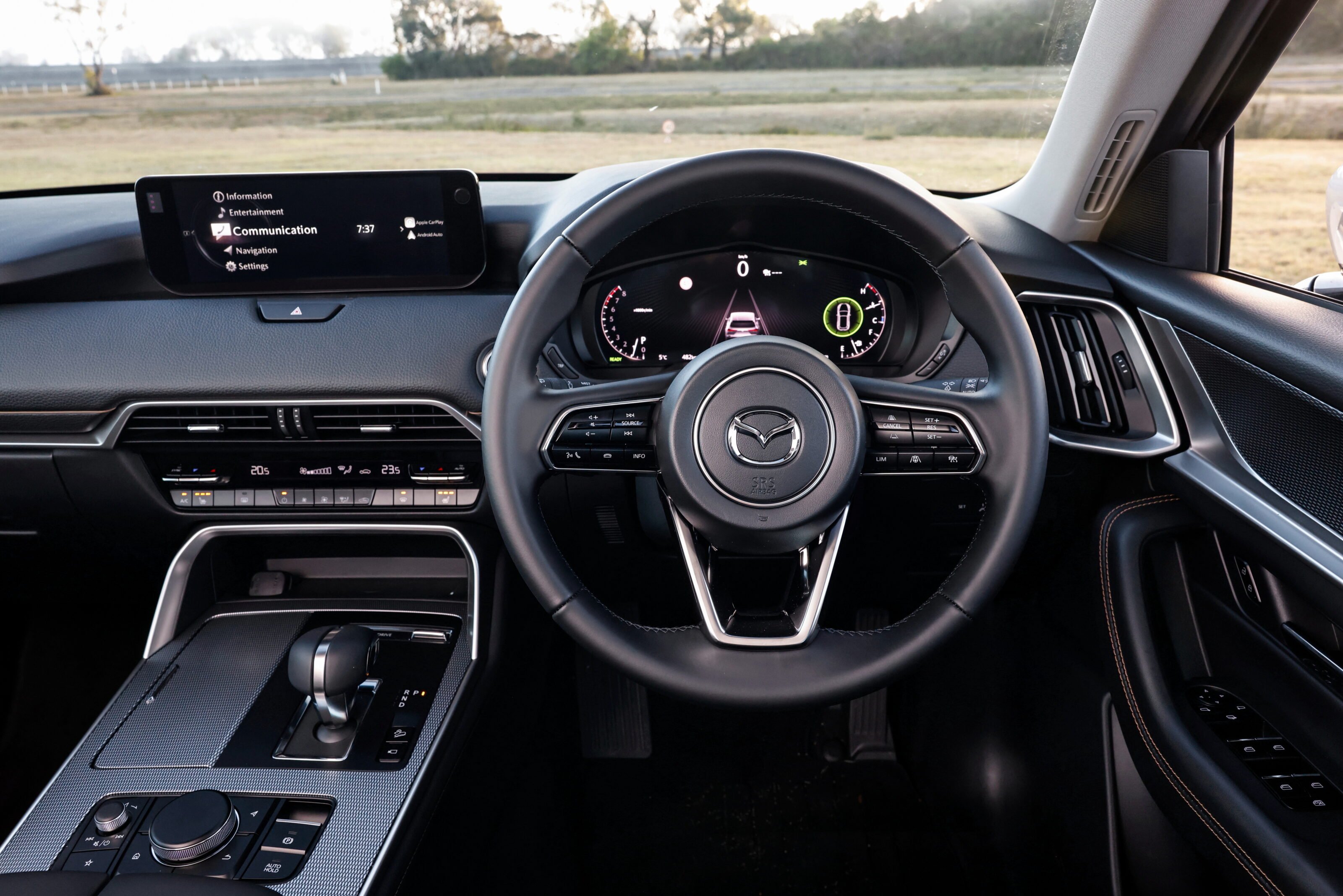
Push Aoki a bit harder on why such changes were required and he cedes a little. When asked if Mazda should have tested locally on Australia’s poor quality country roads, he notes that “I believe we should have understood the customers’ driving scenes better and more accurately… we are considering what needs to be done to better understand the market. We are trying to figure out the ways that we can adapt in terms of accurately assess and evaluate the local conditions.”
“I don’t think it was a good situation because the [old] vehicle moved too much before it could be balanced. The vehicle body moved not only up and down but also sideways. It moved a lot,” he explains.
As well as attempting to address the CX-60’s ride issues, the vehicle has come in for some modest equipment revisions, an update to the trim structure, a few engineering tweaks to the plug-in hybrid versions, a new entry-level engine is in the works and, best of all, it’s had a serious haircut on price – around $10k in some instances. Mazda claims that these revised asking prices reflect the sums that the vehicle was transacting at before, but it seems like a tactic to reignite interest in the CX-60. It could well work.
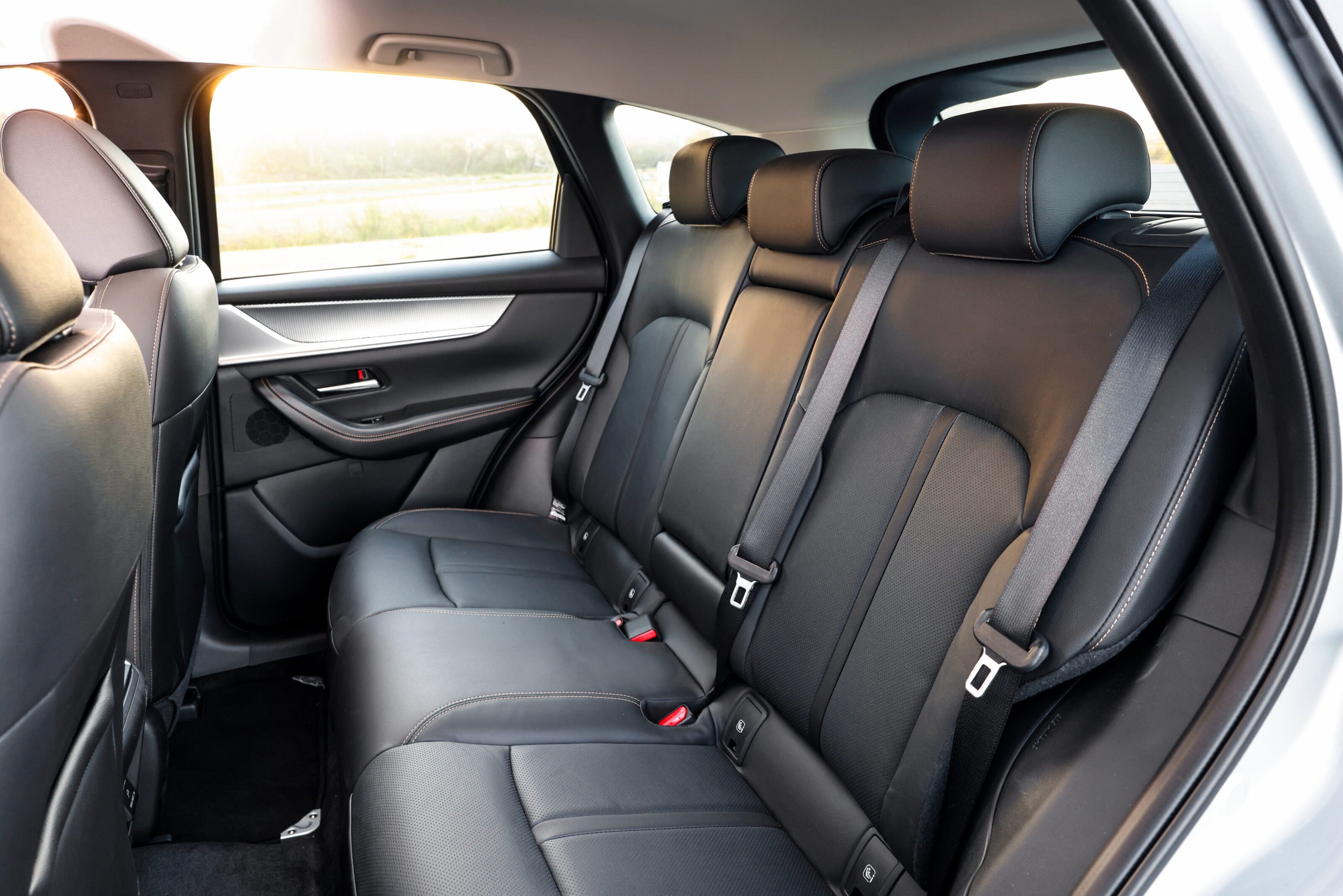
The entry-level version that will join the six cylinder 3.3-litre diesel and petrol variants and the 2.5-litre plug-in hybrid will be a normally-aspirated 2.5-litre Skyactiv-G powerplant, driving the front wheels exclusively. This is likely to be a stop-gap model that brings the CX-60’s entry price down in the interim before the all-new CX-5 arrives. We’ll have more details on that engine later. As it stands now, the opening point of the range is $50,240 before on-road costs for the new G40e Pure turbocharged inline-six petrol trim. That’s a 209kW CX-60 for much the same price as a 140kW CX-5 G25 GT SP. Seems like strong value to us.
Rather helpfully, Mazda had examples of the old version of the CX-60 for us to batter over Lang Lang Proving Ground’s worst surfaces and then do a compare and contrast with the new model. The differences weren’t stark, but represented a more than worthwhile improvement in body control and passenger comfort. Where the old car would never seem to settle onto its springs and induce quite severe head toss on the savage diagonal runnels on the test route, the newer vehicle boasted far superior compliance. There’s now a more controlled feel as the dampers run towards the end of their travel, and the softer springs bring a little more polish to the secondary ride.
There’s less pitchiness in the vehicle than before, the steering has been revised to reduce vibration through the column, understeer has been reduced by lowering the mounting point of the front knuckles and a propensity for lift-off oversteer has been reduced by removing the rear-anti roll bar.
Put simply, it’s a more comfortable and composed car than before. The steering software and stability control system have also been appropriately tuned to account for these changes to vehicle dynamics. The net result is a more comfortable ride without sacrificing too much of the CX-60’s alertness. It’s still taut-ish, but it’s no longer wearingly unsettled. The compromises have been managed smartly.
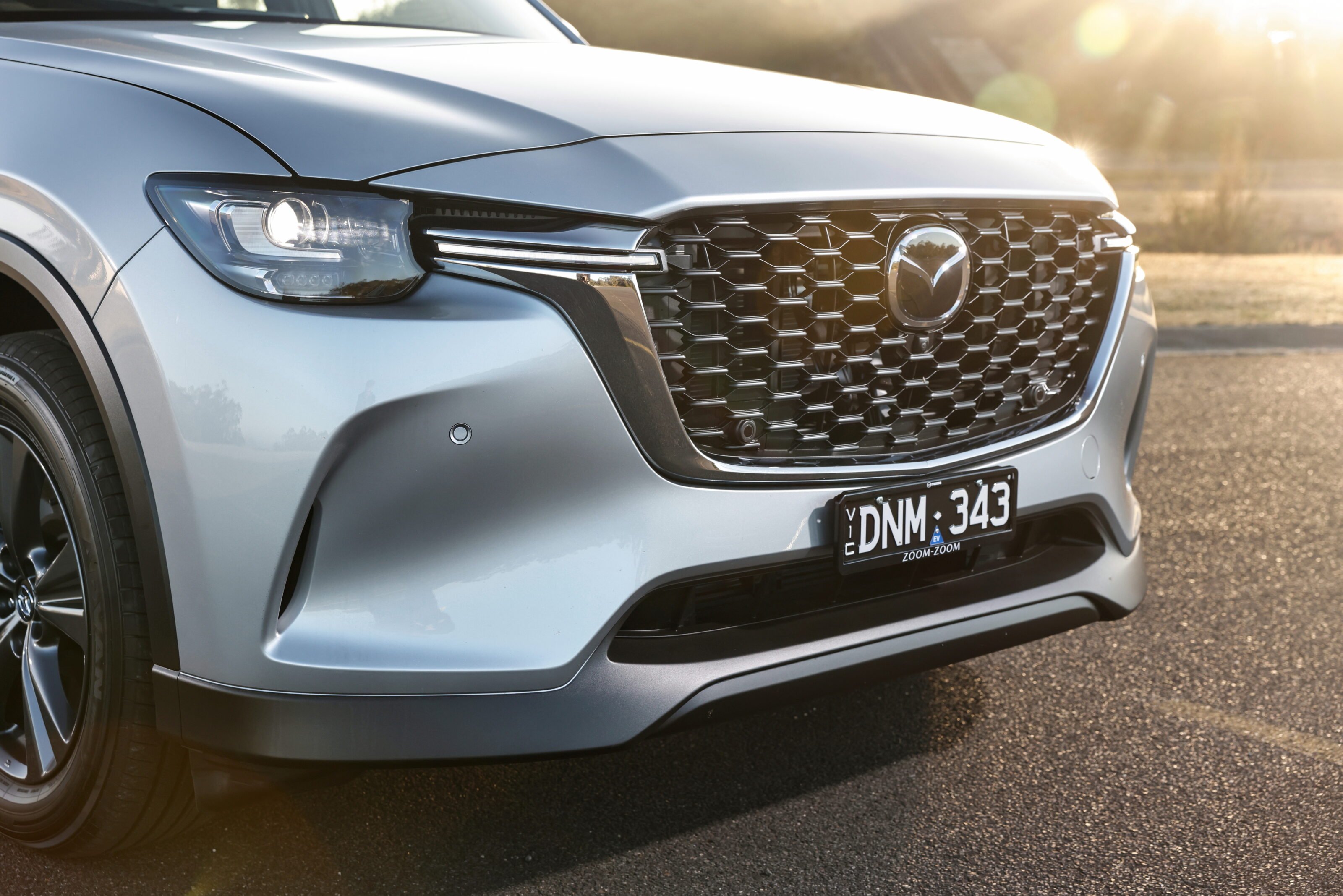
These improvements apply across the board, but the 2.5-litre plug-in hybrid version has come in for some additional attention. The old car was afflicted by significant driveline shunt, especially in town at light throttle loadings, and new software has been installed to allow for a more cultured take-up of drive. The handover between the internal combustion engine and the electric motor has also been finessed. The improvement here is noticeable, but that transition is still not exactly butter-smooth. All three of the CX-60 powertrains drive through an eight-speed automatic gearbox that uses clutches rather than a torque converter, and the clutch actuation and slippage has been refined to deliver smoother shifting and part-throttle response.
It’s just a shame that the CX-60 was rushed to us post-COVID without these engineering issues addressed. Perhaps the company was so keen to leverage its reputation for sporty handling that it took its eye off the fact that most buyers who choose large(ish) SUVs prioritise comfort, stability and safety over an invigorating steer. Mazda’s decision to engineer a range of large-capacity internal combustion engines in an era of downsizing also looks a mis-step, especially in the face of the new NVES emissions regulations that are looming on the horizon.
None of which makes this revised CX-60 a bad car. Quite the contrary in fact. What we had already was a good looking, well built and intriguingly engineered SUV that was close to being a genuine contender. Now that the impediments to choosing it have belatedly been massaged away, it’s a fairly easy vehicle to recommend. Choosing the best buy in the line up isn’t the work of a minute though.
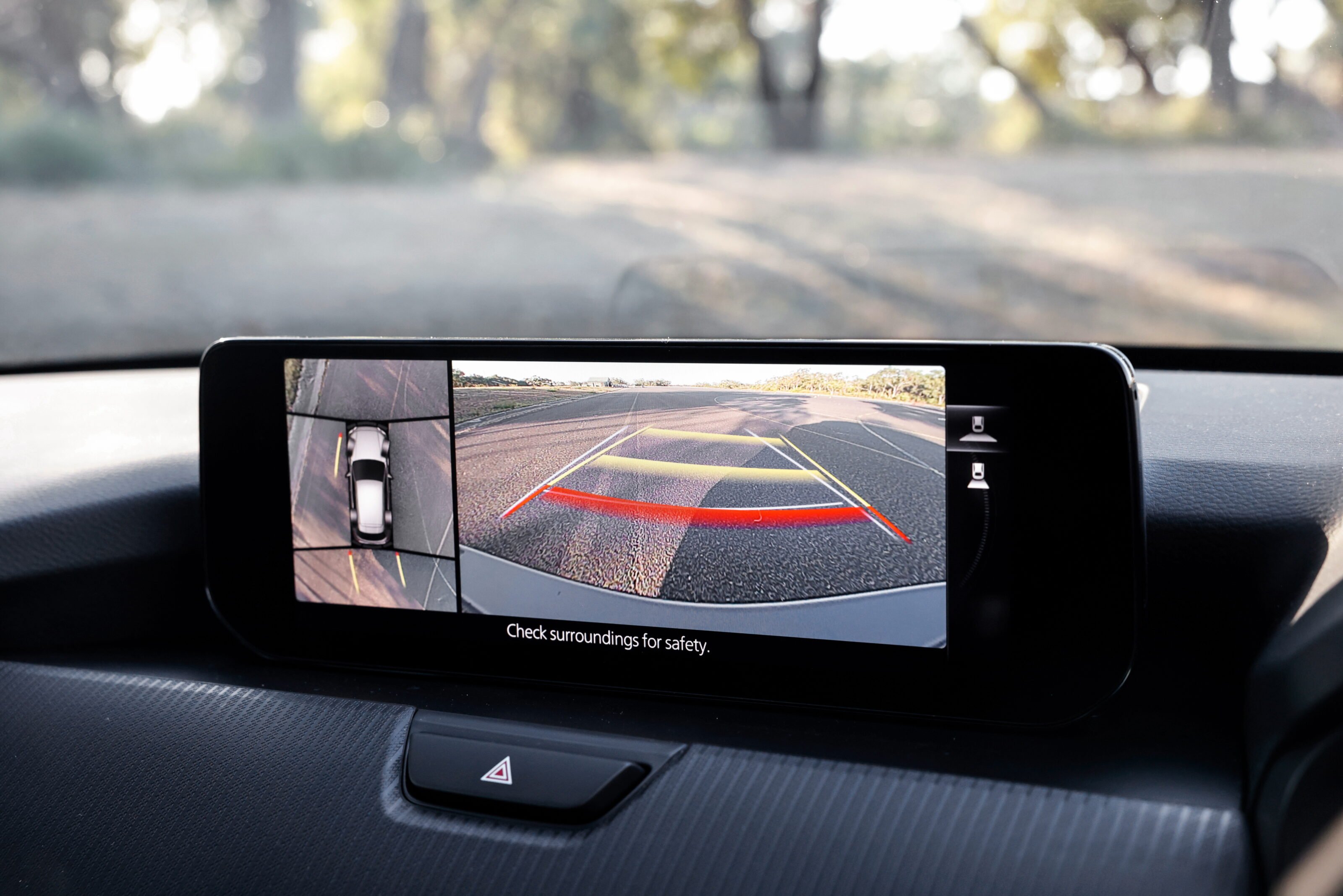
All three of the current powertrains have something to be said for them. To date, Aussie buyers have voted with their wallets in favour of the G40e 3.3-litre petrol engine, which comprises 45 percent of all CX-60 orders. Some 30 percent then choose the P50e 2.5-litre plug-in hybrid, leaving 25 percent keeping chimney sweeps in business with the D50e 3.3-litre turbodiesel.
The diesel is interesting. While you can feel the extra weight in the nose versus the petrol and (especially) the PHEV, the not insignificant matter of 550Nm of torque gives it an easy-driving feel and it has a character all of its own. Like the G40e petrol engine, it features mild hybrid tech, with re-gen braking, but it’s only rated for towing up to 2000kg (braked) where the other two can tow up to 2500kg. Apparently that’s down to a historic cooling issue and it would have been good to have seen that particular shortcoming addressed in this update, but that one obviously slipped down the priority list.
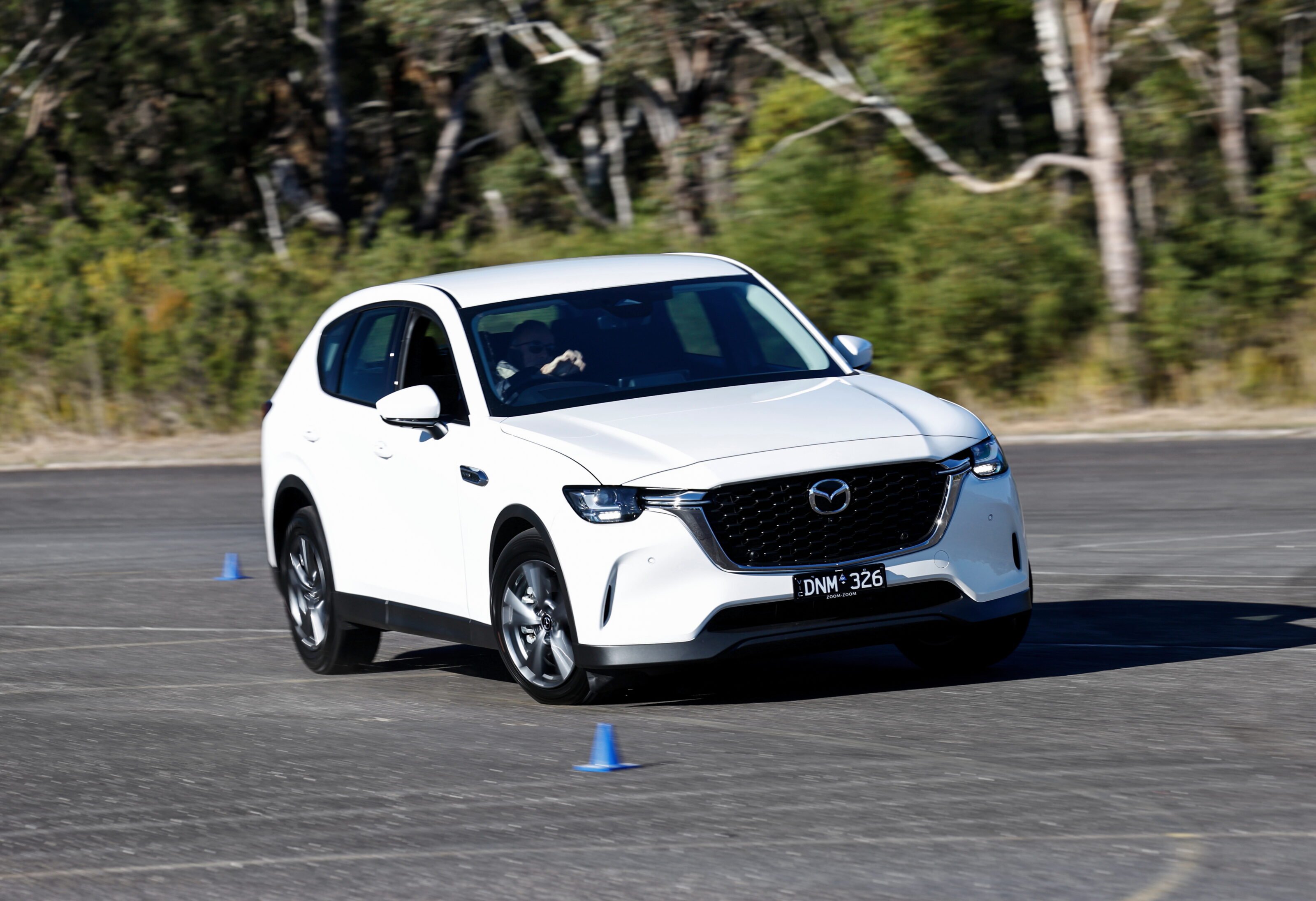
The CX-60 remains probably the best vehicle in its class in terms of interior finish, and the new trim structure adds an element of additional choice for buyers. At the base of the range is a new Pure grade, after which it ascends through Evolve, the new Touring variant, GT and the flagship Azami, which tops out at $81,490 for the PHEV. The Azami is also offered with the option of Takumi Package (with a white interior) or the SP Package (tan with suede effect finishes), which will set buyers back an additional $2000. At present, all trim levels are offered with all three engines, but that’s likely to change with the introduction of the 2.5-litre SkyActiv-G engine. This is available in the CX-60 in the Japanese market in a 138kW/250Nm state of tune at the moment, although those figures may change slightly for the Aussie homologated unit.
Other changes? A new Zircon Sand metallic colour has been added to the palette for 2025, there’s additional sound-absorbing insulation in all models and the Active Sound Enhancer, an engine sound symposer that pipes fake engine noise into the cabin, has been dialled back in volume.
Mazda has created a better CX-60 at a more aggressive price. Of course, there’s an argument that it should have done so straight off the bat three years ago, and that it’s a day late and a dollar short in its efforts to make good. Indeed, some buyers may have tried the CX-60 and decided that it wasn’t for them. It’ll take something to get them to give this otherwise impressive vehicle a second chance, and given the development costs of the car, that’s a mistake that Mazda can ill afford. Still, better late than never.
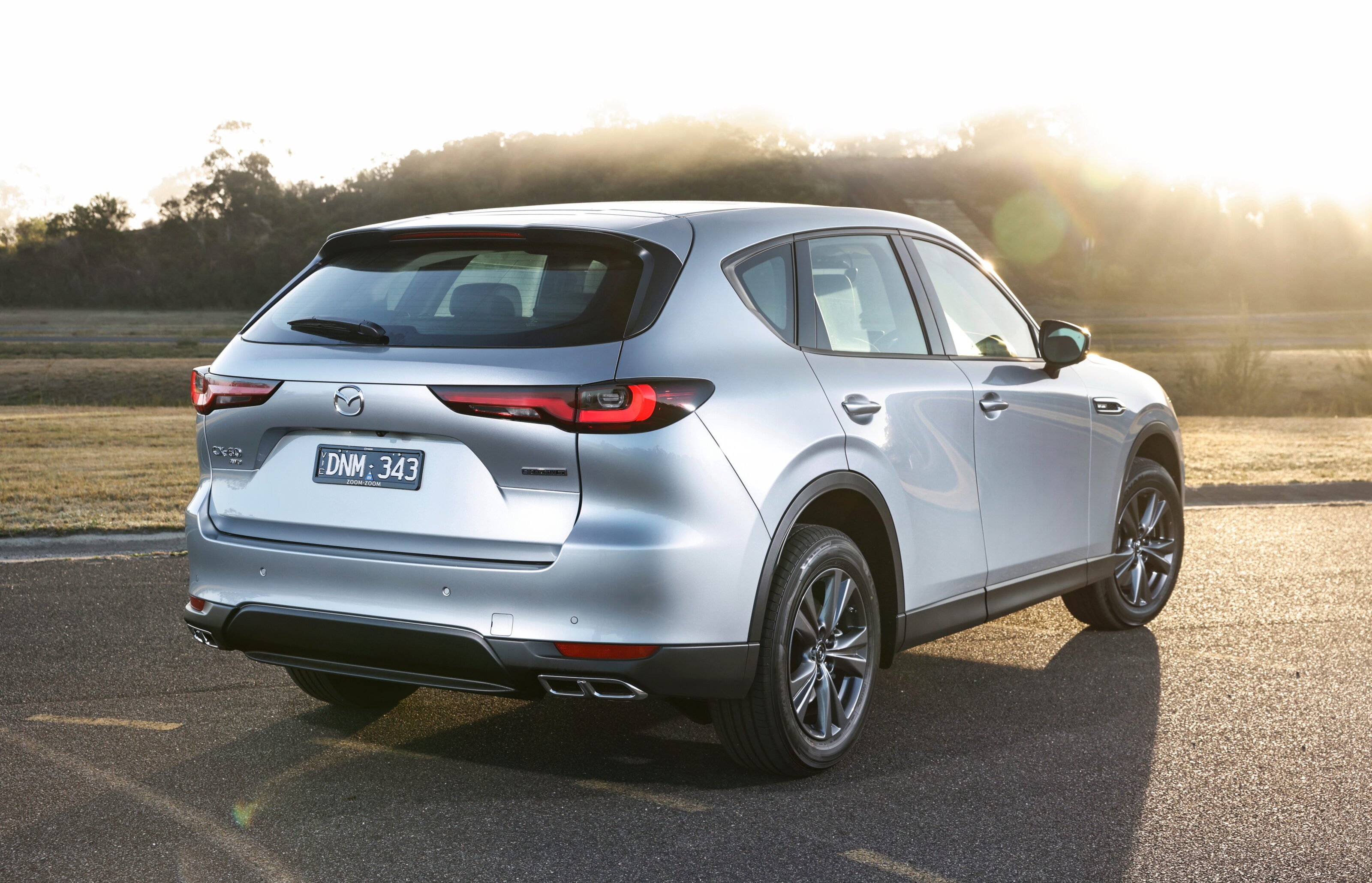
Specifications
| Model | CX-60 G40e Touring |
|---|---|
| Price | $58,240 |
| Engine | 3.3-litre inline-6 |
| Power | 209kW @ 5000-6000rpm |
| Torque | 450Nm @ 2000-3500rpm |
| Transmission | 8-speed auto |
| Claimed fuel consumption and CO2 | 7.4L/100km and 174g/km |
| 0-100km/h | 6.9sec |
We recommend
-
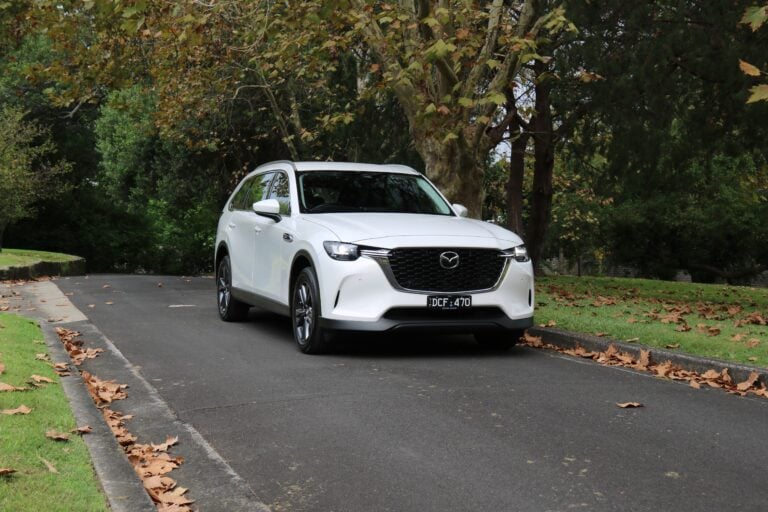 Reviews
ReviewsMazda CX-80 G40e Pure: Is the base model the best?
Mazda launched the fourth and final member of its large platform line-up locally in November 2024 and it’s been a good seller since. Is the entry-level Pure the CX-80 to choose?
-
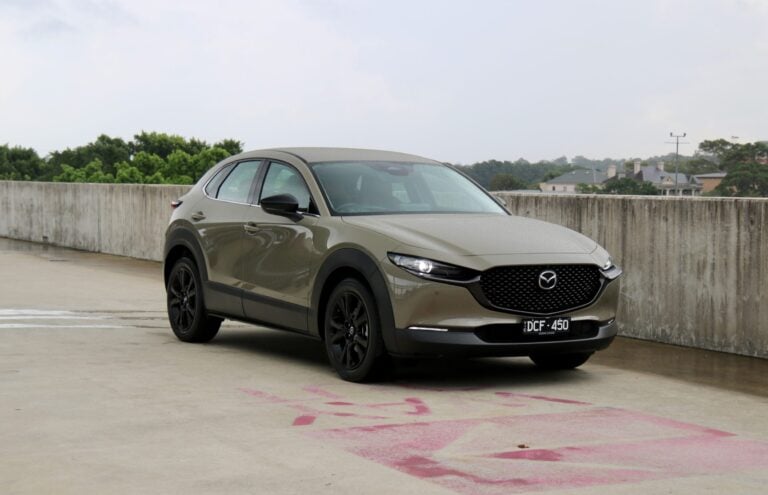 Reviews
ReviewsMazda CX-30 Touring LE: Small SUV doubles as a real ‘driver’s car’
WhichCar puts the Mazda CX-30 small SUV to the test to discover how it measures up against others in the class, for the price.


